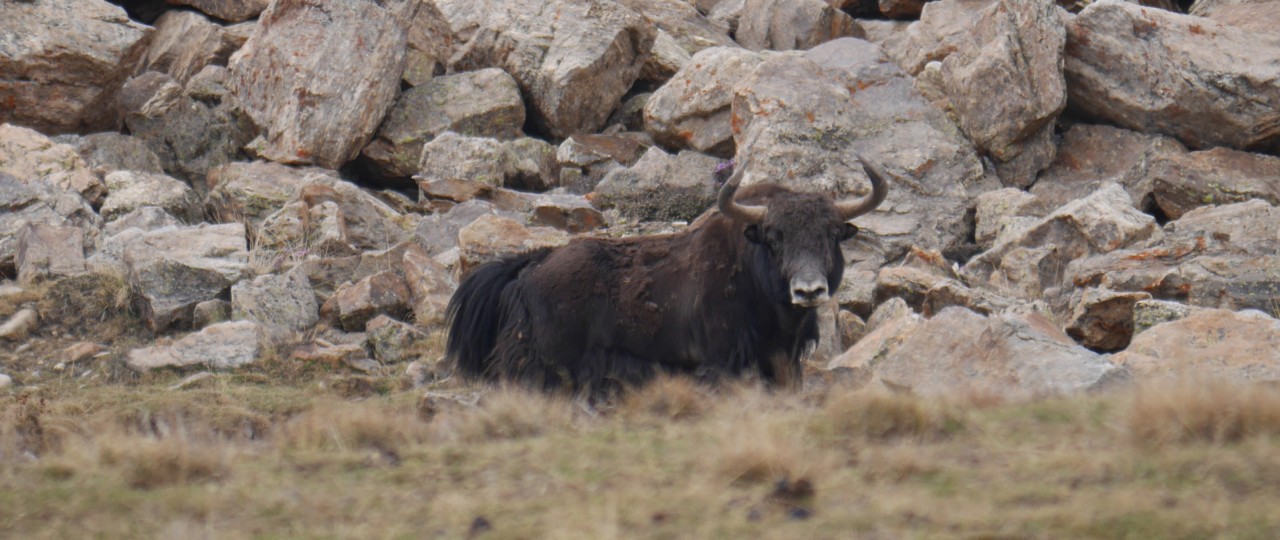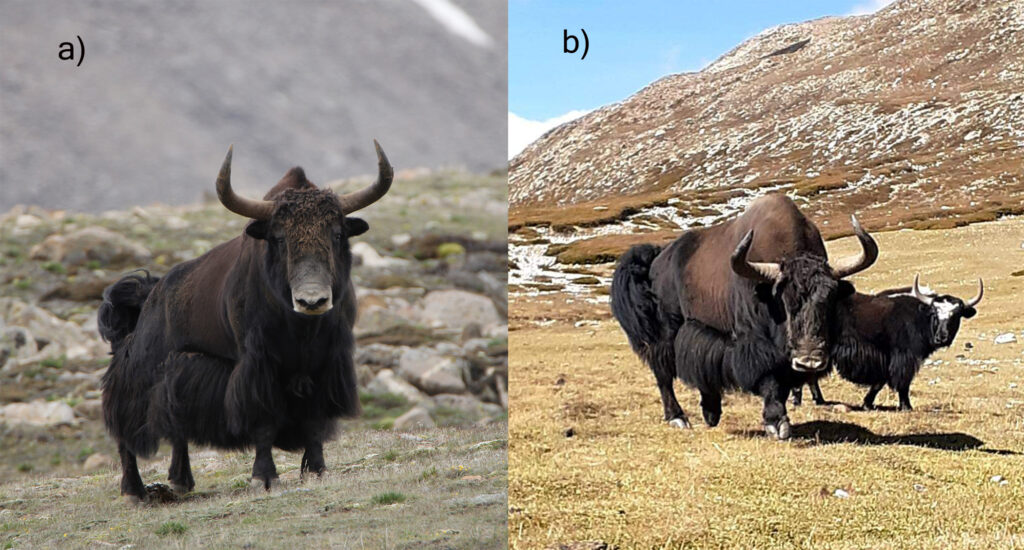Phylogeographic analysis shows the need to protect the wild yaks’ last refuge in Nepal
Wild yaks were considered regionally extinct in Nepal for decades until two live individuals were documented from the remote Transhimalayan valleys of Upper Humla in north‐western Nepal, in 2014. However in the lack of a genetic analysis, the International Union for Conservation of Nature (IUCN) considers the sighting record as uncertain and seeks for an additional evidence for conclusive confirmation.
In this recently published study, we present phylogenetic and haplotype network analyses of wild and domestic yak samples to reveal that the wild yaks in Upper Humla, Nepal, share the haplotype with wild yaks from the north‐western region of the Qinghai‐Tibetan Plateau in China, providing validation to the rediscovery (that was based on morphology and behaviour of the sighted animals). We also discuss their hybridization status while also outlining implications for their conservation.
Find the study here
Photographs of wild yaks from Upper Humla. (a) The single wild yak seen in Upper Humla in July 2015. Its greyish‐white muzzle, handle‐bar horns, hump raised above the shoulder, long shaggy black‐dark brown coat and thick tail are characteristic of wild yaks. Note the dung pile between its hind legs. Photo: Naresh Kusi. (b) A wild yak sighted with a domestic yak in Upper Humla in September 2020. The domestic yak lacks a greyish‐white muzzle, has a nonuniform coat (with white patches on its forehead and shoulder), thinner and smaller horns, is smaller in size, and carries an inconspicuous hump. Photo: Bishnu Bahadur Lama.

